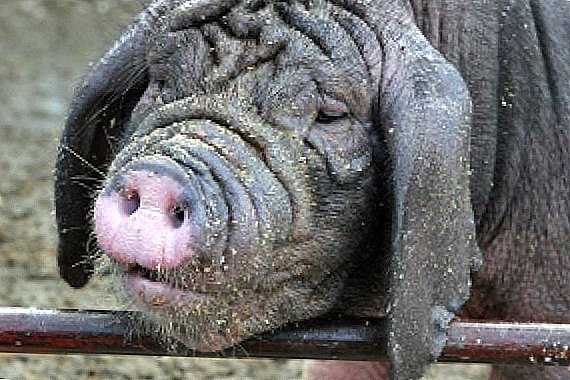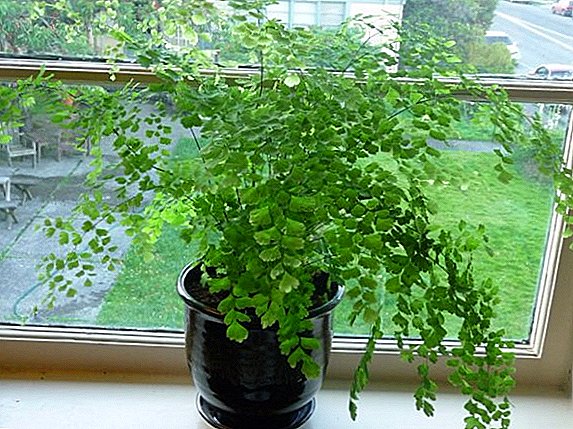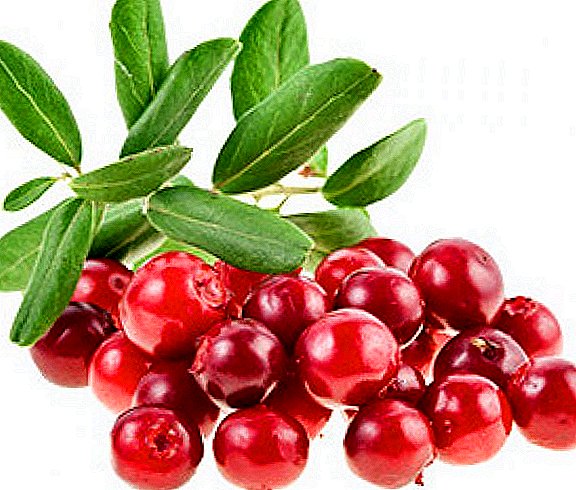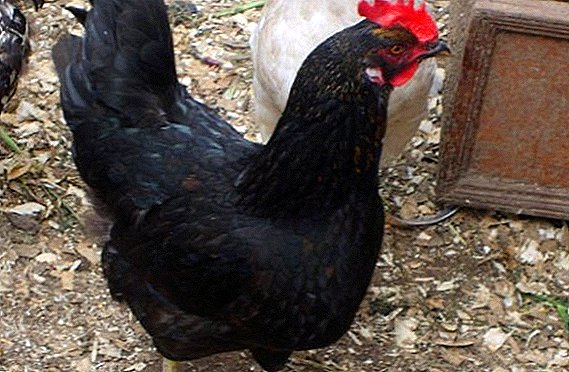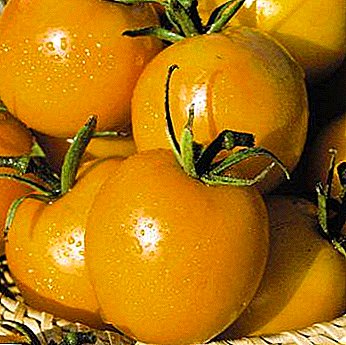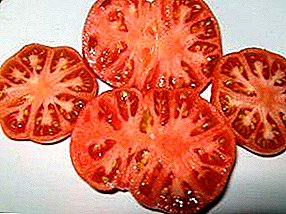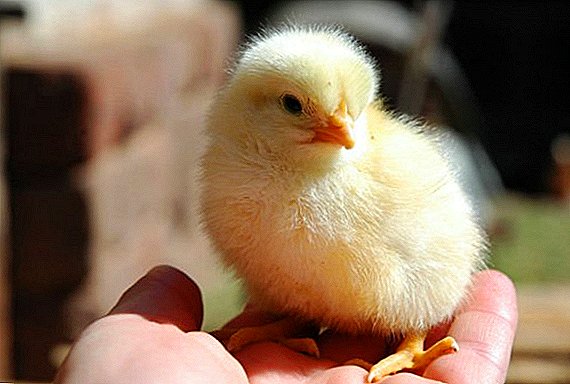 Growing stockings can cause a lot of trouble to the poultry farmers: at the initial stage of their life, chickens are very sensitive to external conditions - any change can negatively affect their development. To avoid this, it is necessary to carefully control the climatic conditions of the chicks, to monitor their diet, to carry out preventive measures to combat diseases, as well as to know the main reasons for the growth of the young. We'll talk about all this in the article.
Growing stockings can cause a lot of trouble to the poultry farmers: at the initial stage of their life, chickens are very sensitive to external conditions - any change can negatively affect their development. To avoid this, it is necessary to carefully control the climatic conditions of the chicks, to monitor their diet, to carry out preventive measures to combat diseases, as well as to know the main reasons for the growth of the young. We'll talk about all this in the article.
Causes of poor chickens
Active growth of young stock is observed in the first weeks of life. With all the conditions of maintenance, weight gain occurs quickly. But if mistakes were made in some way, development may slow down or stop. The causes of developmental disorders are described below.
Biological
Deviations in the development of the chick can be if:
- the selected egg had defects and was not noticed during the selection;
- the egg was improperly stored during the pre-incubation period;
- the egg was not cooled or heated on time;
- the embryo was infected due to improper keeping of the hens;
- egg overheated during incubation;
- disrupted moisture during incubation;
- the layer did not receive enough vitamins during the laying of eggs.
Did you know? Chickens are born out of eggs 50x50: half male, half female.
Incorrect content
Chickens should grow warm. Even a slight decrease in temperature can lead to the fact that the chick will spend all the energy obtained from food not for growth, but for warming. In addition, in the first two weeks of life, the bird is formed immunity, so if the body is cold, the immune system will not be able to debug its work.  The optimal temperature for chickens in the first weeks is + 30 ° С, then it can be lowered to + 25 ° С. Overheating also adversely affects the health of the young. Heat stroke can cause intoxication of the body. Drafts are also harmful to the growing body: the chick can easily catch a cold. Bird growth may slow down if the house is poorly lit.
The optimal temperature for chickens in the first weeks is + 30 ° С, then it can be lowered to + 25 ° С. Overheating also adversely affects the health of the young. Heat stroke can cause intoxication of the body. Drafts are also harmful to the growing body: the chick can easily catch a cold. Bird growth may slow down if the house is poorly lit.
At the initial stage of the life of chicks, daylight hours should be 17 hours. The lighting should not be intense, otherwise the chicks may become irritable and begin to peck at each other. Also, the causes of slander can be poor nutrition, non-compliant conditions, stress.
It will be interesting to know how to grow and feed the chickens correctly.
Feeding errors
If the diet is not built correctly, it can also cause delays in the development of birds. The stomachs of chickens in the first days of life are able to perceive a limited range of products. Others, at best, will be immediately excreted from the body, due to which the chick will not receive the required amount of nutrients.  Unbalanced diet is also the cause of the slow growth of young animals. With a lack of protein foods in the diet, weight gain is slowed down, and with a lack of vitamins, avitaminosis develops, with the result that the bird loses its appetite and becomes weak and lethargic. Signs of beriberi usually appear from the fifth day of a chicken’s life, and they have their own for each vitamin:
Unbalanced diet is also the cause of the slow growth of young animals. With a lack of protein foods in the diet, weight gain is slowed down, and with a lack of vitamins, avitaminosis develops, with the result that the bird loses its appetite and becomes weak and lethargic. Signs of beriberi usually appear from the fifth day of a chicken’s life, and they have their own for each vitamin:
- A - conjunctivitis, weak legs;
- In - spasms, the head is thrown back, development lags behind;
- D - rickets, badly grows, soft bones, badly eats;
- K - the chicken refuses to eat, the skin is dry, there is no thermoregulation on hot days, cannibalism.
Diseases
Diseases of chickens can be divided into three groups:
- Infectious (harmful microorganisms enter the body of chicks from the external environment or from a sick layer). Such diseases can be dangerous not only for the entire livestock, but also for humans.
- Parasitic (worms, ticks, fleas, lice and others). Weaken the body of the animal and make it more vulnerable to infections.
- Pathology or disease caused by the violation of the conditions of the poultry. As a rule, they are caused by unbalanced nutrition, poor sanitation, and non-compliance with the temperature regime.
 In more detail about the ailments of chickens, we describe below.
In more detail about the ailments of chickens, we describe below.Did you know? Some people suffer from actorophobia - fear of chickens and chickens.
What to do: the rules of growing chickens
In order for the young growth to grow and develop well, it is necessary to keep it in suitable conditions, monitor its diet, and carry out preventive measures in time to combat illnesses.
How to select eggs for incubation
The hatching of young animals depends on the quality of the eggs selected for incubation. In order for high birth rates to be high, the following rules should be followed:
- eggs should be taken only from a healthy bird;
- Incubation suitable eggs from the mature layer;
- best suited for incubating medium sized eggs;
- Before being placed in an incubator eggs should be carefully checked for internal and external defects, fertilization. Unsuitable: irregularly shaped, rough, cracked, scratched, dirty, too small or large, interspersed, with liquid protein, uniform in the lumen, with yolk stuck to the shell;
- for incubation, it is desirable to collect eggs from the layer at least once every two hours so that the egg does not have time to cool down much;
- in order to give birth to chicks at the same time, group eggs in the incubator by weight;
- better not to incubate eggs that have been stored for a long time. Their viability is very low.

Chick keeping rules
The chicken must live clean: poor sanitation leads to a weakening of immunity and the development of various diseases, so the house should be cleaned regularly, change litter and disinfect feeders and drinkers. In addition, the room where the birds live should be dry, ventilated, without drafts, with a humidity of 60-70%.
Health is affected by the density of the birds. If it is contained in a cage, then in one of them there should not be more than 18 heads, and the cage should be of appropriate size. In the floor content, permissible density of heads per square meter in the amount of 20 pieces, provided that the babies are not yet 4 weeks old. In 4-5 weeks they need to settle - 17 goals per square meter. From 10-20 weeks per square meter it is permissible to find no more than 10 heads.
Read also about how to properly maintain and grow chickens after an incubator.
In a room where chickens live, the temperature should be maintained:
- nestling age 1-2 days: + 35-36 ° C;
- 3-4 days old: + 33-34 ° С;
- age 5-7 days: + 31-32 ° С;
- age 14-21 days: + 28-29 ° С;
- ages 22-35 days: + 26-27 ° C;
- 40-60 days old: + 22-24 ° С;
- 60 days or more: + 18-20 ° C.

Lighting:
- in the first couple of days after birth, the lighting is round the clock;
- at weekly age, you can reduce the daylight hours to 20 hours;
- 8-10 hours of light is sufficient from two months of age.
Important! Temperatures in the house where young animals live should not exceed +40-41 ° C.
Diet and feeding of chickens
It is very important to build the chicken’s diet right from the first days of its life: its development will depend on it. It is better to start feeding immediately with special feeds that match the age of the bird. But in addition to special food, the menu should also include ordinary foods: fermented milk, cereals, fats, greens.  For normal development, young animals need to be fed with cottage cheese, eggs, corn grits, wheat or millet, soybean meal, fish, bone and meat meal, vegetable oil, onions, and vegetable tops. These products can be on the menu from the first days of the chick's life. In addition, it is necessary to give vitamins and minerals. On the first day of life, the chicken eats 8 times a day (taking into account night feedings), and it can receive the first portion of food only 12 hours later after birth.
For normal development, young animals need to be fed with cottage cheese, eggs, corn grits, wheat or millet, soybean meal, fish, bone and meat meal, vegetable oil, onions, and vegetable tops. These products can be on the menu from the first days of the chick's life. In addition, it is necessary to give vitamins and minerals. On the first day of life, the chicken eats 8 times a day (taking into account night feedings), and it can receive the first portion of food only 12 hours later after birth.
In order for chickens to eat food, you need to watch out for the first days of their lives. If you notice weak and lethargic, prokapah them vitamin complex with a pipette. From the twentieth day of life, the chick should diversify the diet: enter the potatoes, fish and minced meat from waste. Every bird should have free access to the feeder and drinker. These containers should always be kept full, as the chicks are constantly eating.
Important! If the chicken is full, he will have a complete goiter and will immediately fall asleep after feeding.
Disease prevention
To minimize the likelihood of a bird of various diseases, you need:
- Disinfect before settling a new batch of young stock in the hen house.
- Allocate separate rooms for chickens. It is not recommended to keep other animals with them. You should also sort the chicks by age.
- You need to constantly monitor the state of the litter, the availability of feed and water. The litter needs to be changed once a week, feeders and drinkers should be washed twice a day.
- Feed only high-quality food, stick to a certain diet in the diet, do not overfeed the bird.
- Monitor the temperature indicators, humidity levels, the presence of harmful gases in the house.
- Time to treat and prevent various ailments.
- Conduct a course of immunity, using vitamin-mineral complexes.
- Time to identify sick birds and isolate them from the rest.

Chicken treatment
Earlier in our article we have already said that the diseases of chickens can be divided into three groups. Now we will describe the most frequent types of diseases in each group and tell you how to cope with them.
Hypothermia and Hyperthermia
Hypothermia, or in other words hypothermia, is manifested as:
- lethargy;
- decreased activity;
- cough;
- stomach disorders.
Diseases of chickens - prevention and treatment.
Hyperthermia, or overheating, manifests itself:
- loss of appetite;
- stomach upset;
- blue crest.
- control the temperature and humidity in the hen house;
- monitor water availability;
- properly equip the ventilation of the coop.
 Symptoms of the disease disappear with the normalization of climatic conditions in the house.
Symptoms of the disease disappear with the normalization of climatic conditions in the house.Atrophy of the muscular stomach
The disease occurs due to improper feeding of the bird. If the youngsters constantly eat flour food and do not have access to small pebbles, shells, sand, which help them to digest food, then he develops atrophy of the stomach. The disease affects mainly chicks aged 1-3 months and covers 80% of the population.
Symptoms:
- thirst;
- increased appetite;
- excrements contain undigested food particles;
- sudden weight loss;
- indigestion (disorder).

Typhus
Infectious disease affecting the intestines, parenchymal organs. In young animals it is acute, poorly treatable. If individuals are ill, they should be immediately isolated. The rest should be preventive procedures: give the drug "Biovita-40" to 12.5 mg, if the chick is about 10 days, older - 15 mg. If an epidemic has occurred, the affected carcases must be disposed of (incinerated).
Did you know? For the first time in Europe, typhus was massively manifested in England in 1889. Then the disease was called "bird salmonellosis". It was only in 1907 that the causative agent was identified and renamed it pullorosis (from the name of the bacterium).
The disease manifests itself as follows:
- severe white diarrhea;
- lethargy;
- loss of activity;
- loss of appetite;
- the eyes of the birds are half-closed;
- chickens have a ruffled look, squeak.
Salmonellosis
Infectious disease that causes pathological changes in the gastrointestinal tract of an animal and leads to blood infection. It affects the disease mainly youngsters under the age of 4 months and can cause his death. 
Appears:
- severe diarrhea;
- eye rot;
- fear of the light;
- loss of strength.
Pasteurellosis
Another name for the disease is cholera. It is a bacterial disease that affects both domestic and wild birds. Affected feathered either die or slow down in development.
Appears:
- sharp increase in body temperature;
- eye rot;
- depressed state;
- weakness;
- lack of strength to stay on their feet;
- rare stool;
- cramps.
 At the first suspicion of the disease, the chick should be isolated, and the entire room and inventory should be disinfected with chlorine or freshlylive lime. As a preventive measure, it is necessary to conduct a course of taking the drugs of the tetracycline group and improve the conditions of housing and nutrition of young animals.
At the first suspicion of the disease, the chick should be isolated, and the entire room and inventory should be disinfected with chlorine or freshlylive lime. As a preventive measure, it is necessary to conduct a course of taking the drugs of the tetracycline group and improve the conditions of housing and nutrition of young animals.Smallpox
Infectious disease affecting the skin of the bird and the oral cavity. It is transmitted from a sick individual, rodents and bloodsucking insects.
Important! Reliably kill a sick bird so that the disease does not escalate into an epidemic.
Symptoms of the disease:
- weakness;
- weight loss;
- violation of swallowing reflex;
- unpleasant breathing;
- pock on the contour of the beak and eyes.
The disease can be cured only in the early stages. The affected skin areas are treated with a solution of furatsilina water-based or boric acid. You can use "Galazolin". 
Coccidiosis
Infectious avian disease caused by protozoan parasites, coccidia. It affects the intestines.
Signs of illness:
- apathy;
- poor appetite;
- constant thirst;
- greenish or reddish diarrhea;
- weight loss.
Lprint using these drugs:
- "Amprolium";
- "Sulfadimezin";
- "Rigekoccin";
- "Koktsidiovit".
 As you can see, in order to grow strong, healthy chickens and minimize the number of culled, you need to adhere to the requirements for the maintenance and care of poultry, feed it only with high-quality food and regularly carry out fortification. When a sick individual is found, it should be immediately isolated from others and a series of measures taken to combat the ailment. An isolated animal should be given maximum attention and care.
As you can see, in order to grow strong, healthy chickens and minimize the number of culled, you need to adhere to the requirements for the maintenance and care of poultry, feed it only with high-quality food and regularly carry out fortification. When a sick individual is found, it should be immediately isolated from others and a series of measures taken to combat the ailment. An isolated animal should be given maximum attention and care.

